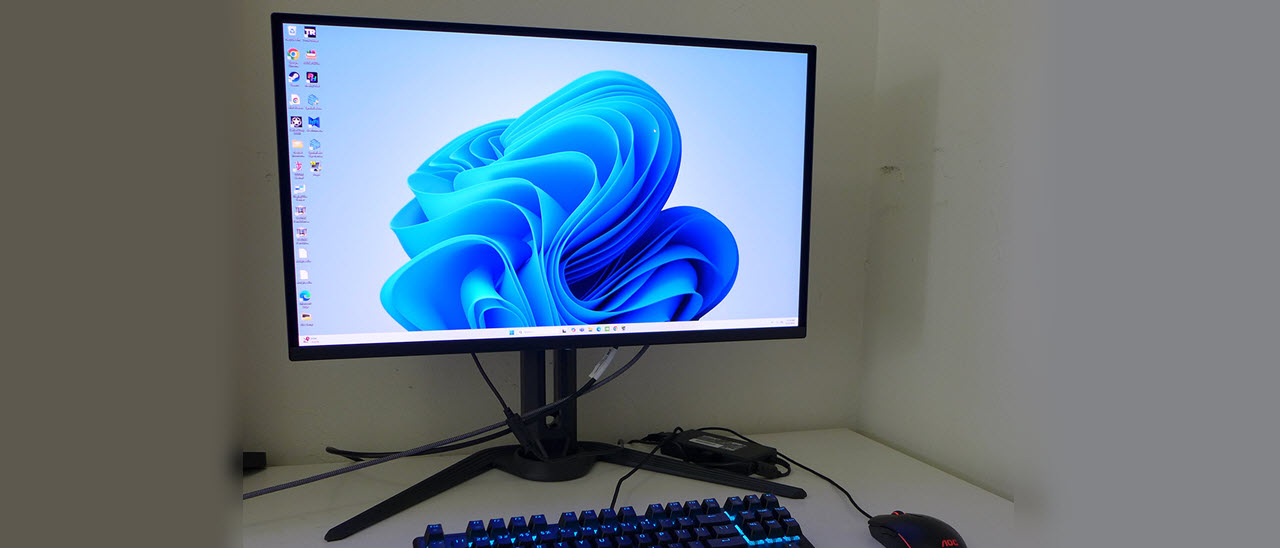Why you can trust Tom's Hardware
The FO27Q5P includes a factory calibration data sheet with each sample. Mine matched the test results closely. It does not need to be calibrated in the Standard picture mode I used for all tests.
Grayscale and Gamma Tracking
Our grayscale and gamma tests use Calman calibration software from Portrait Displays. We describe our grayscale and gamma tests in detail here.
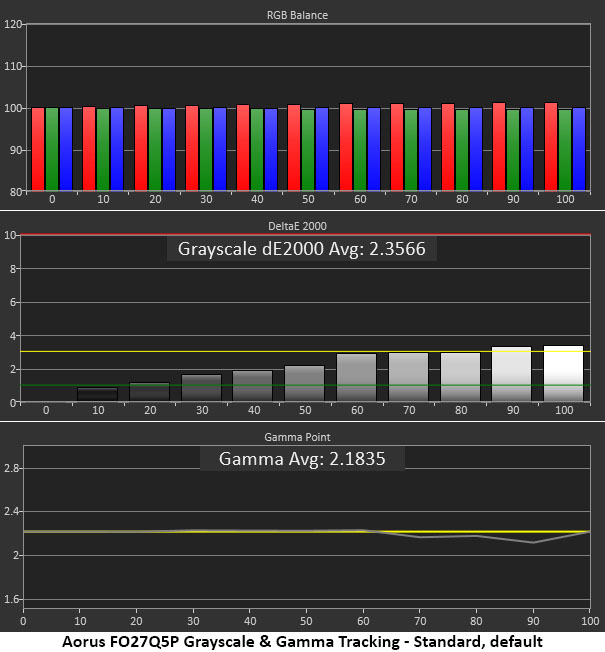
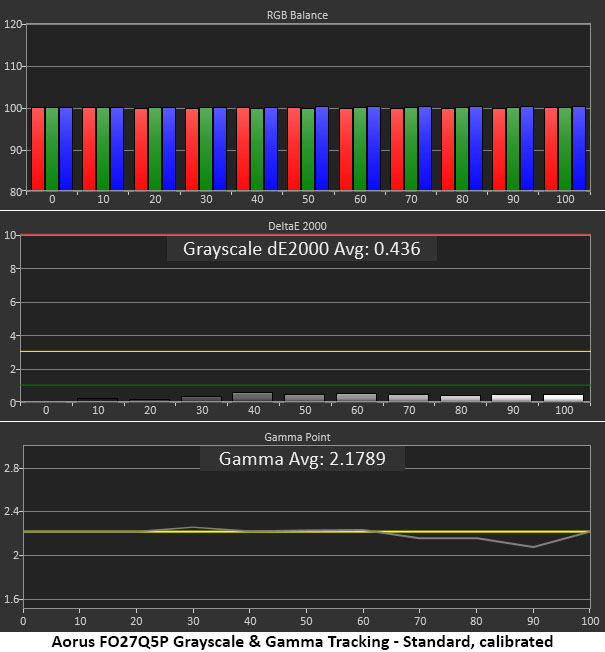
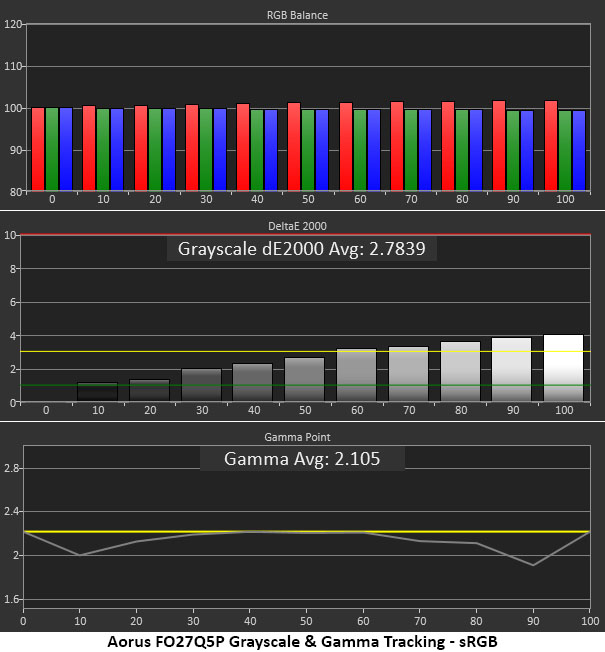
If you stare at the FO27Q5P’s grayscale step pattern long enough, you can see a slight warmth in the top two steps. You probably won’t see that in content, even if you try hard. There is a tiny gamma anomaly from 70-90% brightness, but this too is a minuscule error. This is excellent out-of-the-box performance.
Calibration delivers a pro-level result with all errors below 1dE. The gamma issue is slightly worse, but again, this is a hard error to spot in content.
In the sRGB picture mode, you lose all picture adjustments except for brightness. The warm tone in the brighter grayscale steps is a tad more visible. I also noted gamma issues at 10 and 90% brightness where the luminance values are too high. This manifests in slightly murky highlights and a few gray shadow areas. These issues are small, but they are visible in content.
Comparisons
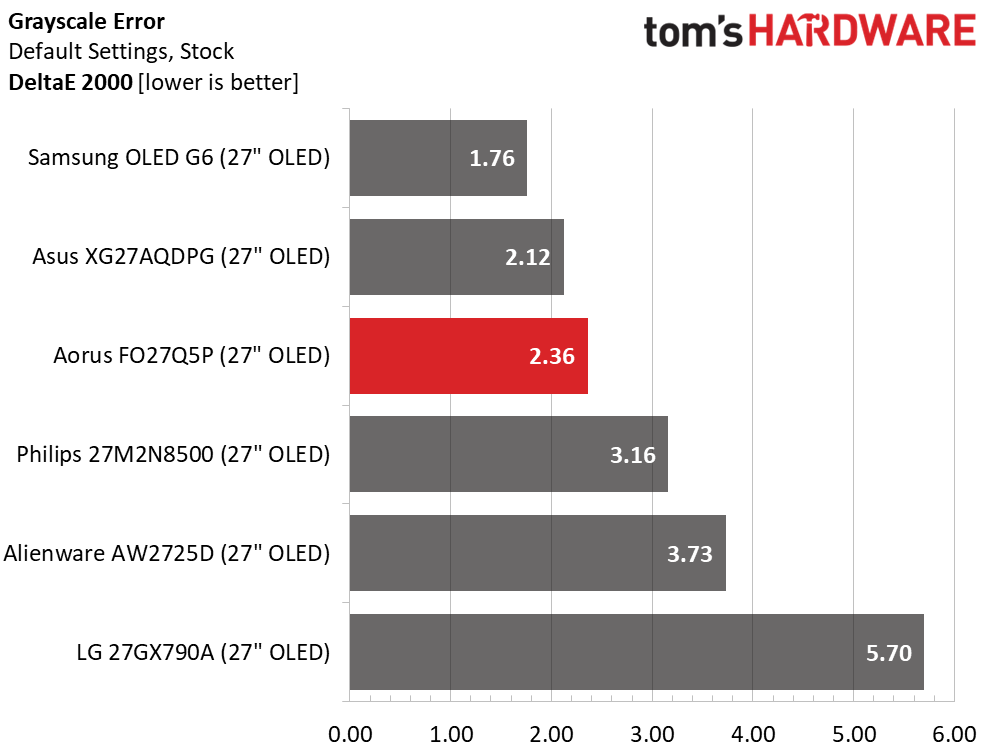
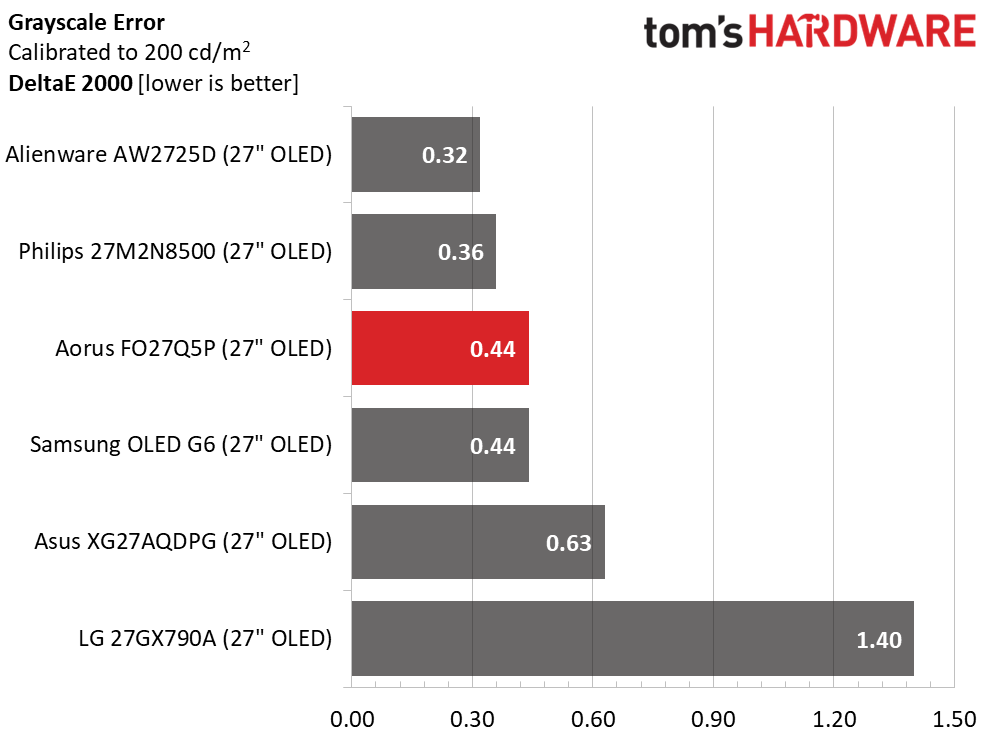


Looking at all six monitors, the FO27Q5P clearly does not need calibration, nor do the Asus or Samsung displays. The Philips and Alienware are borderline, but most users would not see a problem. The LG definitely needs some tweaks for the best picture. After calibration, though, they are all on equal footing with no visible errors among them.
In the gamma test, the FO27Q5P turns in solid numbers with a small 0.19 range of values and a 0.91% deviation from the 2.2 reference. The actual value is 2.18. In the chart, only the Samsung and LG stand out as having a little room for improvement.
Get Tom's Hardware's best news and in-depth reviews, straight to your inbox.
Color Gamut Accuracy
Our color gamut and volume testing use Portrait Displays’ Calman software. For details on our color gamut testing and volume calculations, click here.
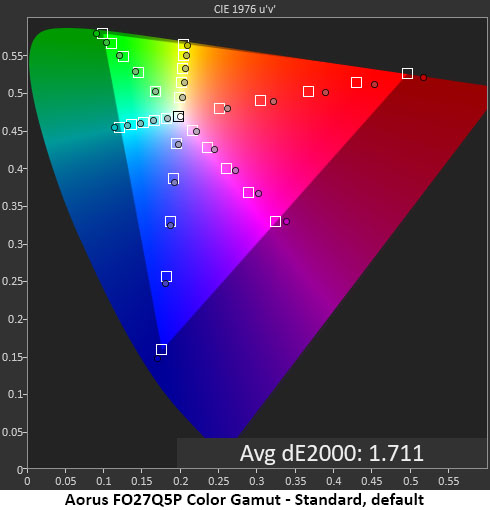


Quantum Dots mean a very colorful monitor, and the FO27Q5P delivers both volume and accuracy. The default chart has no significant errors to point out. Red is a bit oversaturated, but hue points are on or near their targets for all colors. This is excellent out-of-the-box performance. Calibration tightens up hue tracking in yellow and magenta, but this is something more clearly seen by the meter rather than the naked eye. Color tracking doesn’t get much better than this.
Though I noted some gamma errors in the sRGB picture mode, its color gamut tracking is nearly perfect. It has no visible errors, and on the chart, every point is in its target box. This is pro-level performance.
Comparisons
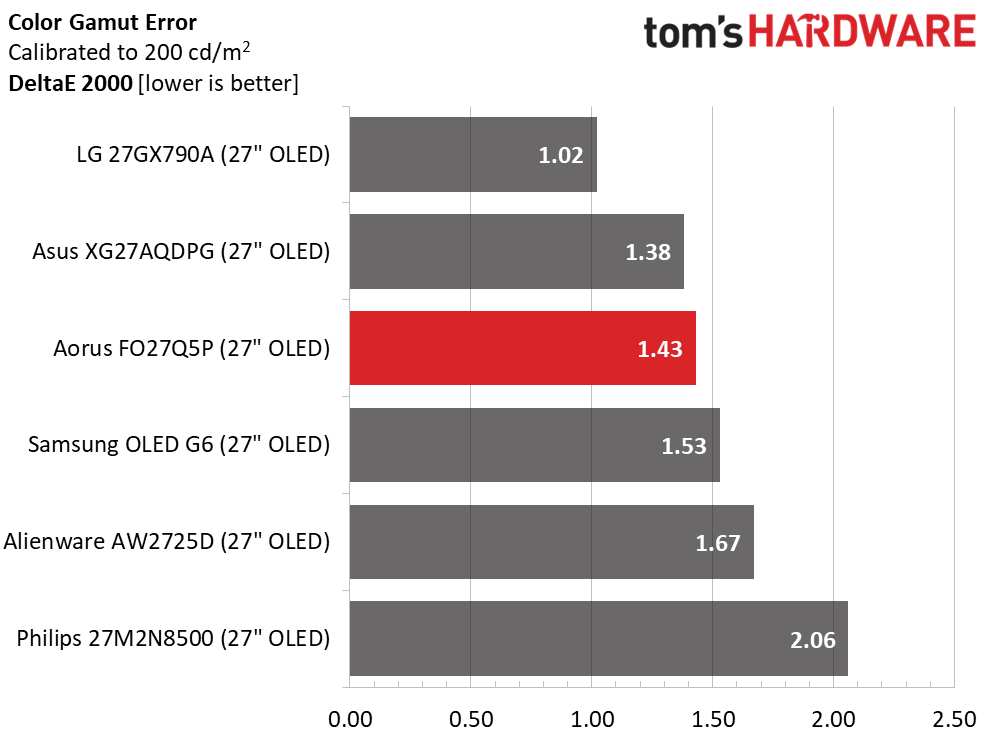

Aorus has clearly made the FO27Q5P’s color accuracy a priority. That is as it should be given the price, but it is a bit above average when compared to other premium OLED displays and that’s a good thing. Looking at all the numbers together, it’s hard to complain about any of these monitors.
In the volume test, only the LG stands out as lacking a Quantum Dot layer. It's nearly 100% coverage of DCI-P3 is good, but the FO27Q5P’s 108.61% is visibly better. Both red and green are more vivid and that’s a difference that can be seen in a side-by-side comparison. The 97.94% coverage of sRGB is ideal as well. The FO27Q5P is well-suited for color-critical tasks.
Test Takeaway: The FO27Q5P delivers high color accuracy and high volume. It’s one of the most colorful OLEDs you can buy, and it doesn’t need calibration. Its gamma and grayscale tracking are on point as well. There is nothing to complain about here.
MORE: Best Gaming Monitors
MORE: How We Test PC Monitors
MORE: How to Buy a PC Monitor
Current page: Grayscale, Gamma and Color
Prev Page Brightness and Contrast Next Page HDR Performance
Christian Eberle is a Contributing Editor for Tom's Hardware US. He's a veteran reviewer of A/V equipment, specializing in monitors. Christian began his obsession with tech when he built his first PC in 1991, a 286 running DOS 3.0 at a blazing 12MHz. In 2006, he undertook training from the Imaging Science Foundation in video calibration and testing and thus started a passion for precise imaging that persists to this day. He is also a professional musician with a degree from the New England Conservatory as a classical bassoonist which he used to good effect as a performer with the West Point Army Band from 1987 to 2013. He enjoys watching movies and listening to high-end audio in his custom-built home theater and can be seen riding trails near his home on a race-ready ICE VTX recumbent trike. Christian enjoys the endless summer in Florida where he lives with his wife and Chihuahua and plays with orchestras around the state.
-
Heat_Fan89 Three years ago I purchased their 43" 4K monitor. It's LED but can run up to a 120Hz. It's been trouble free but a funny thing happened recently where I thought it failed. I was messing with some of the settings and all of a sudden I see this red dot appear out of nowhere right dab in the middle. I immediately thought stuck pixels. So I started researching how to possibly get rid of those stuck pixels.Reply
Well nothing worked. It turns out, I enabled by mistake a crosshair LED dot for first person shooters in the settings. :ROFLMAO: -
Moxylite Nice display (probably), but i'd get the extended warranty, A quick search of "Gigabyte monitor issues" says a TON, & both Asus & MSI 500hz equivalents are getting better reviewsReply
